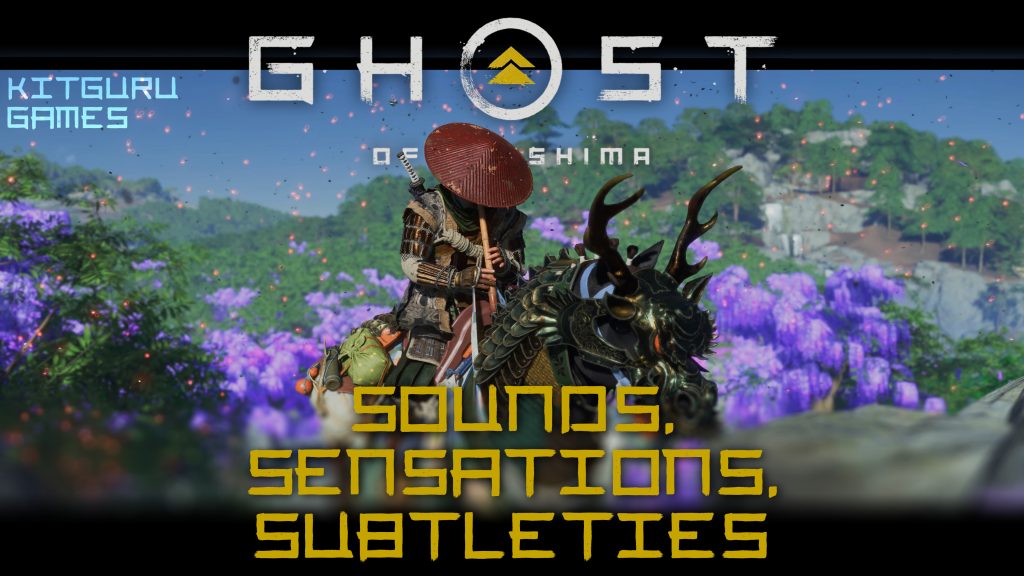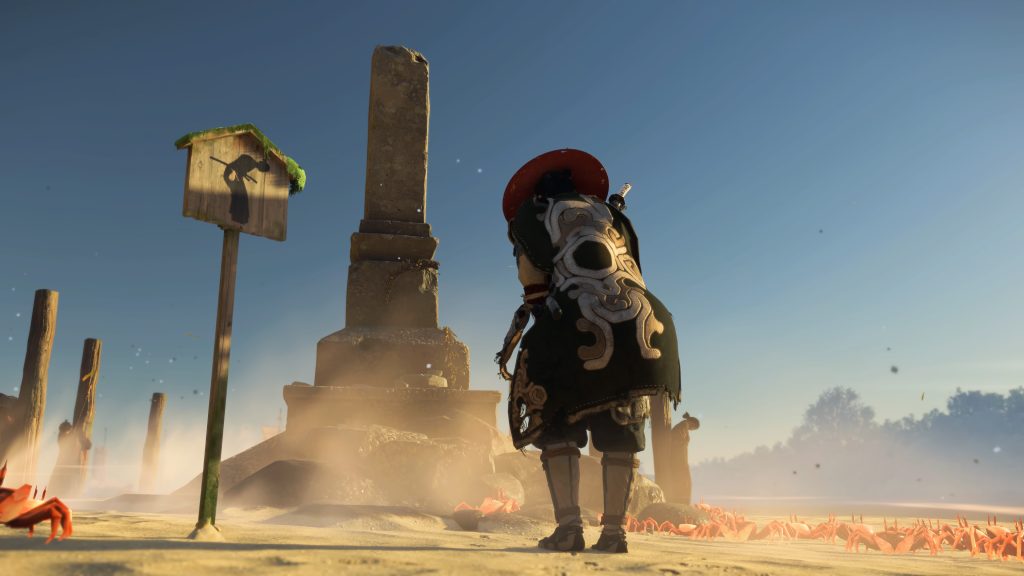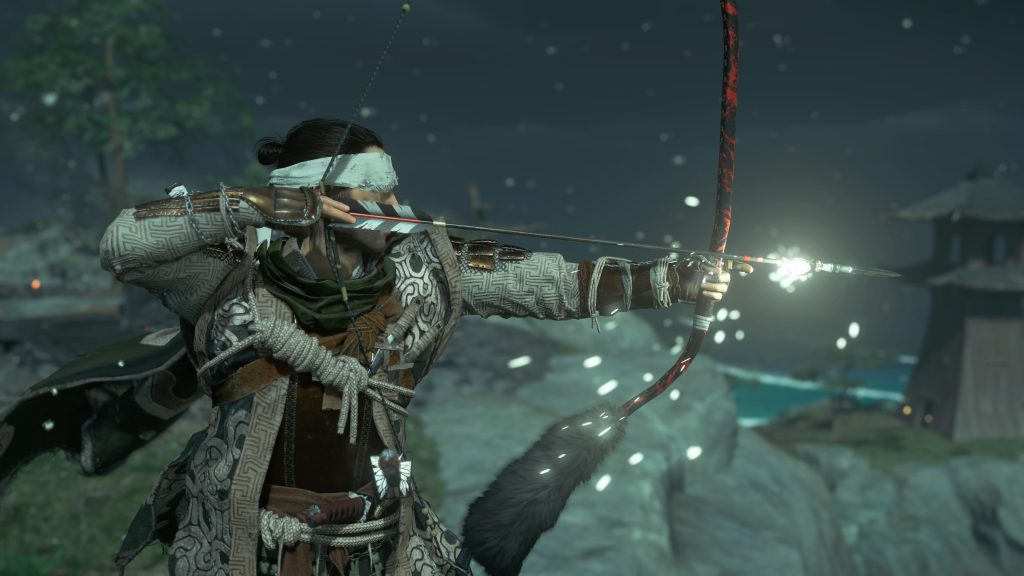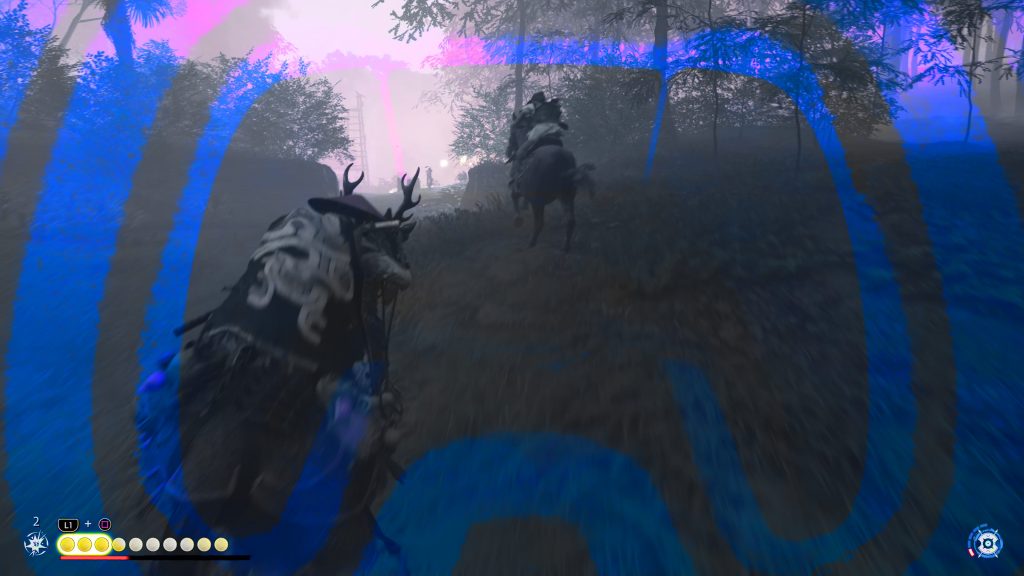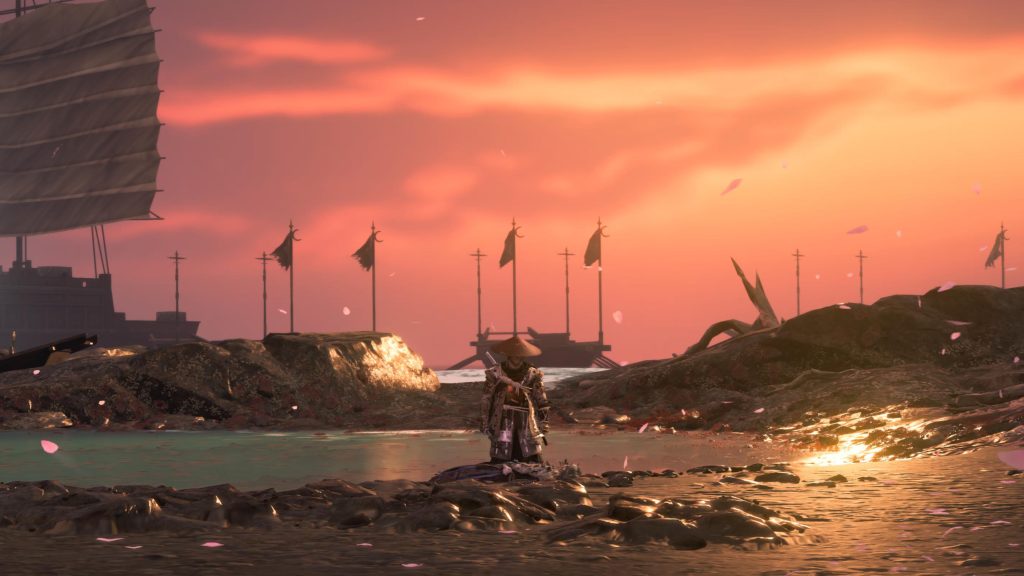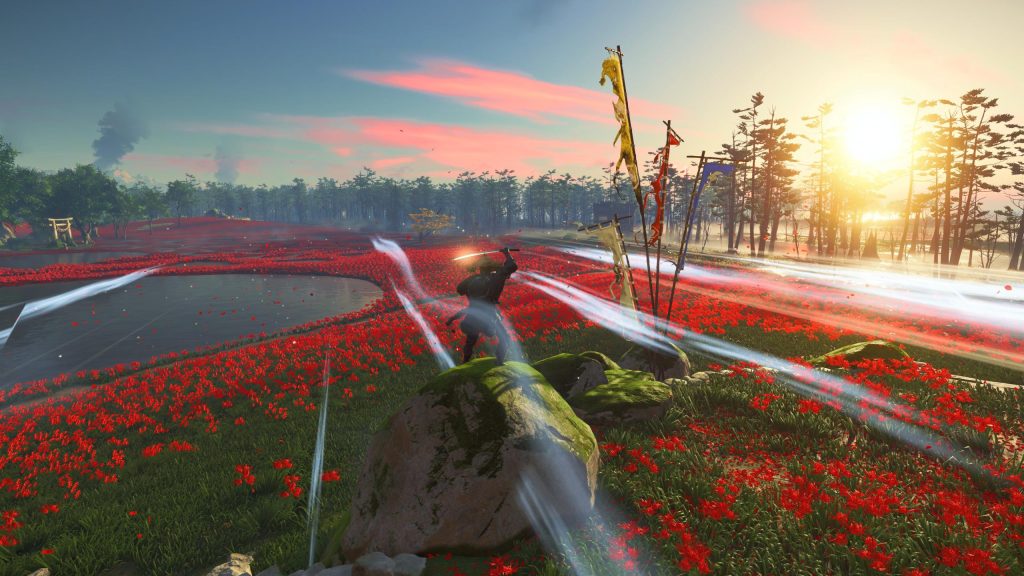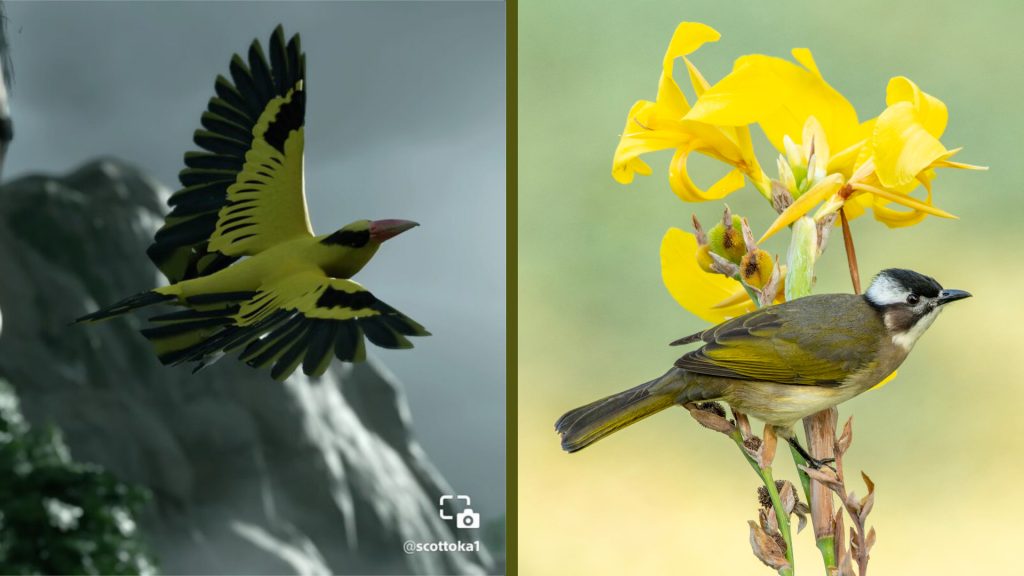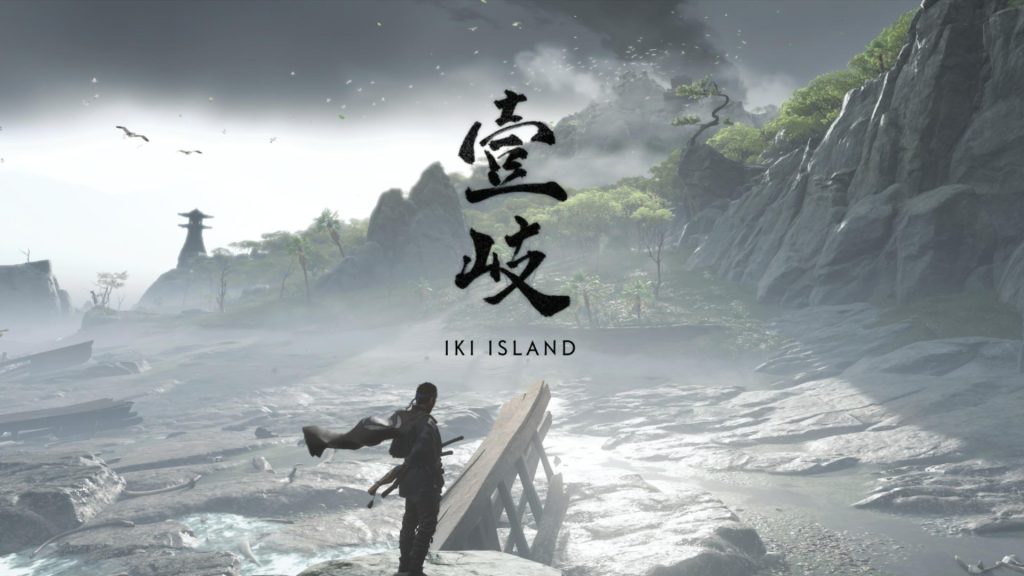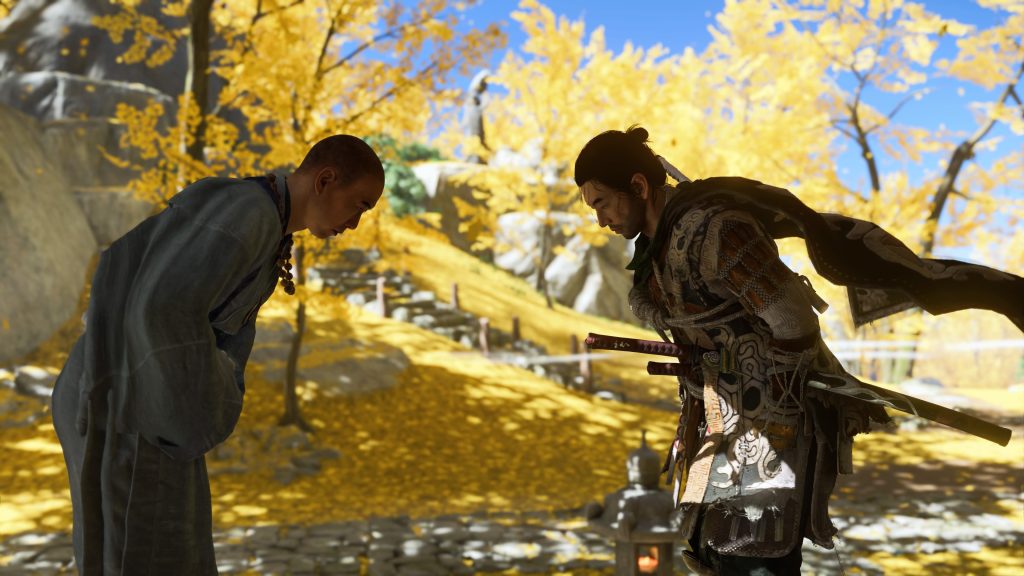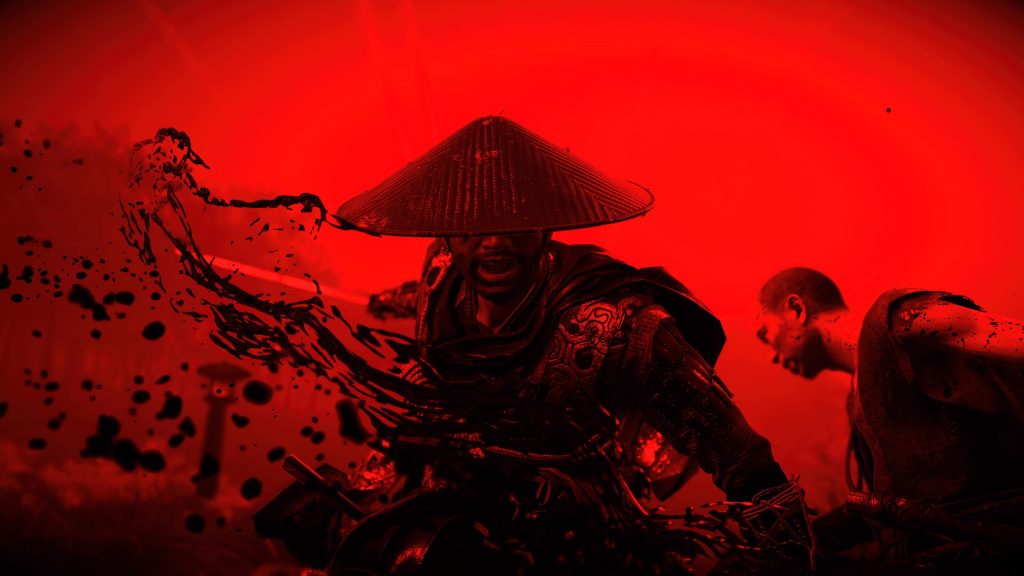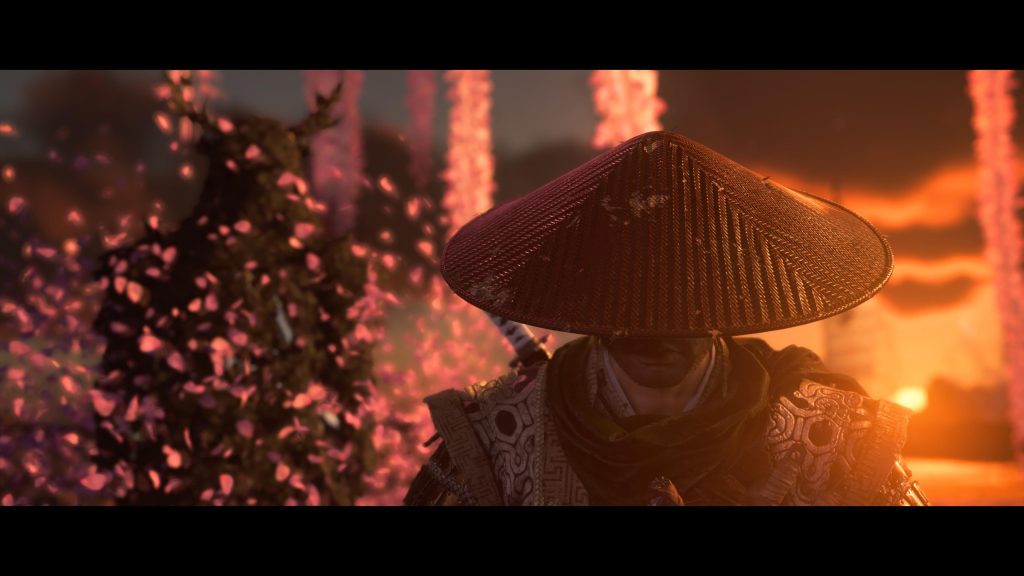With Ghost of Tsushima arriving on PC last Thursday, I have been looking back at Sucker Punch’s 2020 PS4 swan song and analysing exactly why I think the game managed to stand out from the crowd of open world titles – hitting different in a way which few contemporaries can claim. Previously, I looked at the innovative Guiding Wind mechanic and how it removed any and all need for a HUD-based mini map. I then analysed all the subtle yet effective ways in which Sucker Punch implemented moments of choice through the experience, both narratively and on a gameplay front. For the final part of this loose trilogy, I will be discussing the purposeful and creatively-dense sounds, sensations and subtleties of Ghost of Tsushima.
One of the most under-appreciated aspects of any title is its sound. Depending on the game, this might not be too big of a deal, with some titles being deemed as perfect ‘podcast games’ and others letting audio take a step back in favour of multiplayer voice chats – with any and all audio being primarily reduced to set dressing.
Ghost of Tsushima is one game in which you’ll want to break out your best set of headphones – or even better a full on surround sound system. Of course, when it comes to music and sound effects, Sucker Punch do not miss. Each clash of a sword, every gallop your horse takes and the soundtrack itself have all been carefully crafted with the greatest of care and quality…but I’m not here to talk about that. Instead, I want to draw attention to the many small and particular decisions made when it comes to ambient sounds and environmental vibes – the small choices whose absence would not have been noted by players – but the inclusion of which helps to elevate Ghost of Tsushima to far beyond the sum of its parts.
From the main menu itself, you can already observe the team’s attention to detail. Pressing the start button to begin your journey or continue your playthrough is met with a decisive and attention grabbing gong, serving as a clean break between the real world and the fantastical journey you are about to go on. When you hear that soundbite, you are already on the island of Tsushima, ready to take on any and all Mongols.
Navigating the various UI and menus all feature similar levels of immersive audio. Opening up the map brings its own confident and unique sound effect – mixing a deep drum beat with the subtle rustling sounds of paper, as if Jin himself was unfolding the map. Zooming in and out of the map is also accompanied by its own unique whooshing sounds – ending with a definitive thud as you max out the zoom to reveal the full island and its various regional names/locations. And of course, closing the map also has its own bespoke sound effect: a slower, quieter whoosh as the map fades away, letting the ambient sounds of the word around begin to once again flood your ears.
Most players won’t be analysing and breaking down each and every tone heard while navigating the map, but subconsciously or otherwise, all these sounds combine to enhance your immersion within the world; ensuring that from the moment you press the start button all elements of interaction within the game are fully crafted and immersed within the confines of the world itself. Even when navigating the map to select a new waypoint, you won’t find your eyes nor ears wandering from the immersivity of Ghost of Tsushima.
This same attention to auditory detail can be heard and felt throughout the rest of the game. Fox dens have their own subtle chimes which in combination with the whimpers of the fox itself, gives you a directional hint as to where to go in order to locate the woodland creature – assuming the visual cues didn’t lead you to it already.
Approaching a pillar of honour where you can find a new cosmetic for your sword introduces its own snappy and exciting music sample as text pops up showing that you have discovered a pillar of honour. Beyond the association of what the sound itself indicates, the strong and confident twangy riff of the traditional Japanese biwa (a short-necked wooden lute used in narrative storytelling) creates a sensation that – as one person put it – “when this plays you know you found somewhere very special.”
These are just a couple of the dozens if not hundreds of carefully considered decisions made when it came to creating the audioscape for Ghost of Tsushima. Beyond those which I already mentioned, you have the wind chimes, whose bells clink in the wind, inviting you to pick them up. In fact, picking up pretty much any item has its own unique sound effect – from bamboo to iron; arrows to flowers; linen; yew wood and more. You could close your eyes and still know exactly what you picked up (though I’d advise against it simply because of how pretty the game is).
Calling for your guiding wind when amongst trees will cause the flora around you to bend and creak from the forces, with bamboo trees in particular clanking together in that oh-so-satisfying way.
I would of course be remiss to not discuss the sound effect which plays at the start and end of each tale, again, definitively setting you up for the adventure ahead – aiding each tale into feeling like its own mini episode in an epic historical drama. You become so attuned and familiarised with the thud of each new tale that in the very rare occasions in which this audio cue isn’t used at the start of a tale, you will certainly take note – lending extra attention and impact to whatever story is heading your way.
Being a PS4 game at heart, Ghost of Tsushima makes great use of the DualShock 4’s internal speaker, with the sheathing of your sword, the rustling of the wind and more coming through the controller itself, creating a physically closer connection between you and your actions. Similarly, when composing haikus, the serene and ethereal vocals play both through your primary speakers as well as the controller itself – creating an added level of depth and echo to the music which only further enhances the vibes.
Despite being a PS4 game at its core, Sucker Punch made surprisingly excellent use of the PS5’s DualSense for the Director’s Cut – adding to the pre-existing DS4 features with support for adaptive triggers and advanced haptics.
The game makes rather subtle use of the triggers, primarily saving any resistance for when drawing your bow and arrow (among a few other rare occasions). When it comes to the haptics however, Sucker Punch went all out – while still showing a commendable level of restraint.
The DualSense is by far my favourite innovation of the PS5 solely due to the new haptics introduced with it. Being able to translate sounds directly into sensations has allowed Sucker Punch to offer a confident use of the rumble/haptics with a particular level of precision.
Running around, jumping, dodging, rolling and more are all accompanied by appropriate and dynamic levels of haptic feedback which serves to only enhance the groundedness and viscerality of the world. When riding your horse and trotting around Tsushima, you’ll feel every clip and clop of your horse’s hooves change in both strength and feeling depending on how fast you are going and what terrain you are currently on.
If done incorrectly, the overabundance of sensations and vibrations can be distracting – or even annoying – to some. Fortunately, Sucker Punch took a smart approach with it.
For times where there would be an extended use of haptics (such as when running or galloping on your horse), the initial rush of haptics are quite strong, but then slowly reduce in intensity over time – up until you come across new terrain at which point the haptics reactivate to give you new sensations for whatever texture you are currently on. This ensures that you still feel the maximum impact and effect of the haptics without it becoming a hindrance or overwhelming.
Other subtle uses of the haptics can be felt throughout. Cutscenes will make sparing-yet-effective use of the vibrations to further emphasis explosions, action and anything else the devs want to draw attention to – also serving as a subwoofer in some situations. Additionally, a large majority of the sound effects which played through the DualShock 4’s speaker have been enhanced on PS5 to also include appropriate haptics for the DualSense. From playing the flute to sheathing your sword, composing haikus or even opening the map – players are met with varying levels of haptics which all synergise with the sounds also playing through the speaker.
From the smooth sand-like rush of echoey vibrations when playing the flute to the whooshing which spreads through the controller as you summon a guiding wind, all serve to fully immerse and ground you within the experience. If done right, you won’t necessarily notice all these small sensations unless intentionally looking for them – yet regardless its effects are felt on a subconscious level.
Before we look at some of the various small and subtle additions which I feel are worth noting, I want to touch briefly on the game’s attention to immersion through its lore and worldbuilding. Yes, Ghost of Tsushima is a fictional game with a fictional story – but it is one based somewhat in real world history. As such, the team at Sucker Punch have taken great care into making the world feel as believable and grounded in the lore of historical reality as possible. None of this was necessary, but in going that extra bit further, Sucker Punch were able to make Ghost of Tsushima hit just that little bit extra.
One of the earliest examples occurs near the beginning of the game. The aforementioned guiding wind mechanic is of course created purely as a function of game design, and as such, no one would have looked twice if they had thrown the feature in without any explanation. Ghost of Tsushima does not do this however, instead having it be the spirit of Jin’s father guiding him to where he needs to go.
One small line spoken near the beginning of the game stuck with me throughout the whole playthrough. Despite Jin’s father being dead long before the events of the game itself, his presence is felt throughout – giving insight into Jin relationship and respect for his father as he guides the (sometimes) lost soul to where he needs to go and what he must do.
Similarly, a subtle exchange near the beginning of the game explains how your steed is not just any ordinary animal, but a samurai horse in particular – trained from birth to always return to its master. So while when actually playing it may be a bit odd that you can call your horse and it’ll trot along mere seconds later despite last abandoning it half an island away, this function of gameplay convenience has been given an in-world explanation as to why it works the way that it does.
While exploring the open world of Tsushima you can at any point pull out your flute and begin to play one of a number of songs. In-game, these tunes can change the weather, letting you make the rain dissipate – or if you’re feeling extra moody – you can force a thunderstorm or heavy fog.
No lore reason is given as to why Jin can perform these feats of miracles. That said, throughout the game, it is made increasingly clear that Jin learned all these songs from his mother, creating a strong personal bond and connection to each song, and serving a similar role to that of the guiding wind but from a maternal perspective.
One of the least impactful, though most impressive, attention to lore and word building can be seen with the ‘golden birds’ which fly about and lead you to various points of interest / undiscovered locations. Little information is given about these animals, however in doing some research, the distinct design and colour scheme of these golden birds appear to be heavily based on Tsushima Island’s light-vented bulbul:
“A common species of songbird that favours lightly wooded habitats” which “can frequently be seen in towns, suburbs and urban parks within its range”. Additionally, “the chicks of the light-vented bulbul are always singing; they hop on tree branches, and do not fear humans” – sound familiar? Above all else which I have mentioned so far, the exact species of bird used in the game is something which pretty much no-one has wondered or cared about.
Sucker Punch cared however. The team did their research and ensured that despite being a fictionalised version of Tsushima Island, GoT does as much as it can to craft a believable and fully-realised world with its own carefully-considered ecosystem and ecology. It’s no wonder members of the team have since been granted the role of ambassadors for the real world Island of Tsushima.
Finally, I want to draw attention to a bunch of miscellaneous small details which help to further immerse players in the world – again leading to a sense of groundedness which is far greater than the sum of its parts.
Though not unique to Ghost of Tsushima, the game includes a somewhat dynamic main menu, changing the visuals, colour scheme and audio effects depending on whether you are currently playing the base game, the Iki Island expansion or the Legends multiplayer mode – giving each mode its own unique atmosphere before even pressing the start button.
Speaking of Iki Island, Sucker Punch have gone to great lengths to make the offshoot area its own setting with a unique visual aesthetic and tone. Upon landing on the island for the first time, you are greeted with the familiar title card which pops on screen stating that you have landed on Iki Island.
Unlike every other instance of these title cards however, the text used is black instead of white – letting you immediately know that things on this island won’t be quite the same as on Tsushima’s mainland, especially tonally.
Without going into any spoilers, the populace of Iki Island have had quite a different history compared to those on Tsushima, and it shows. Of course, throughout the main campaign itself, side characters and companions will treat you a bit differently, using more casual language and having an overall different demeanour to what you might expect. This tonal shift however can be felt even when traversing the clear open world, with nameless procedural NPCs also sharing that same demeanour – one example being their refusal to bow back to Jin.
As someone who made very liberal use of the bowing mechanic throughout the base game, coming across one of Iki island’s residents and bowing to them – only for them to scoff back at me – took me by genuine surprise in the best way. As mentioned many times throughout this, the absence of such a shift likely wouldn’t have registered with me – but in going that extra mile, Sucker Punch proved that their care and attention to detail for Ghost of Tsushima and its world comes from a place of true passion.
It would be nearly impossible to go through and highlight every single example of such attention to details, but before wrapping up I want to shout out just a few more things I noticed.
The way in which the game uses particles to bring attention to points of interest from afar not only helps in furthering the beauty of the game, but also removes any unnecessary UI distractions, instead choosing to remain committed to a sense of style. This also allows the team to switch up some of the interactable flora’s designs depending on the region you are in without causing any confusion. A Fox den still looks like a fox den, even if the exact tree which the animal presides under is of a different kind.
Speaking of style, Ghost of Tsushima is one of the most stylish games I can think of, with purposeful intent oozing from every pore of the game’s coding.
From the way in which the map opens and closes, is uncovered, and interacted with all offer a cohesive painterly style and aesthetic. Being able to manually sheathe and unsheathe your katana is another wholly unnecessary yet extremely cool feature which only serves to add to the game’s immersion and roleplaying.
Colour is also a vital part of the game’s aesthetics, with certain moments (both story and gameplay wise) altering the colour palette for added emphasis and impact. Finally (finally), Ghost of Tsushima’s weather system allows for some truly stunning moments of visual beauty. Unlike most games which try to offer the greatest level of clarity, Ghost of Tsushima embraces its cinematic nature, with a more contrast-heavy approach leading to scenes which would not be out of place in some of the most cinematographically-impressive movies.
That’s even without mentioning the game’s Kurosawa mode, which adds a heavy black and white filter, further upping the contrast and including old-school analogue film reel scratches and imperfections – a visual identity ripped straight from Akira Kurosawa’s body of classics. In short, Ghost of Tsushima is a gorgeous game and one which only benefited from being ported to PS5 – and will hopefully go one step further with the PC release.
While Ghost of Tsushima was given its fair share of flowers upon its initial release back in 2020, much of the game was dismissed for being a ‘generic Ubisoft styled open world game’. While much of the core gameplay loop does not stray far from this truth, the MANY different small yet significant tweaks, changes and decisions made both to the formula and beyond it combine to craft an overall experience which genuinely can not be had anywhere else. And this is why Ghost of Tsushima just hits DIFFERENT.
Discuss on our Facebook page, HERE.
KitGuru says: Are you excited for the PC release? Will you play with a mouse and keyboard or the DualSense? What do you think/hope Sucker Punch are cooking up for Ghost of Tsushima 2? Let us know down below.
 KitGuru KitGuru.net – Tech News | Hardware News | Hardware Reviews | IOS | Mobile | Gaming | Graphics Cards
KitGuru KitGuru.net – Tech News | Hardware News | Hardware Reviews | IOS | Mobile | Gaming | Graphics Cards


